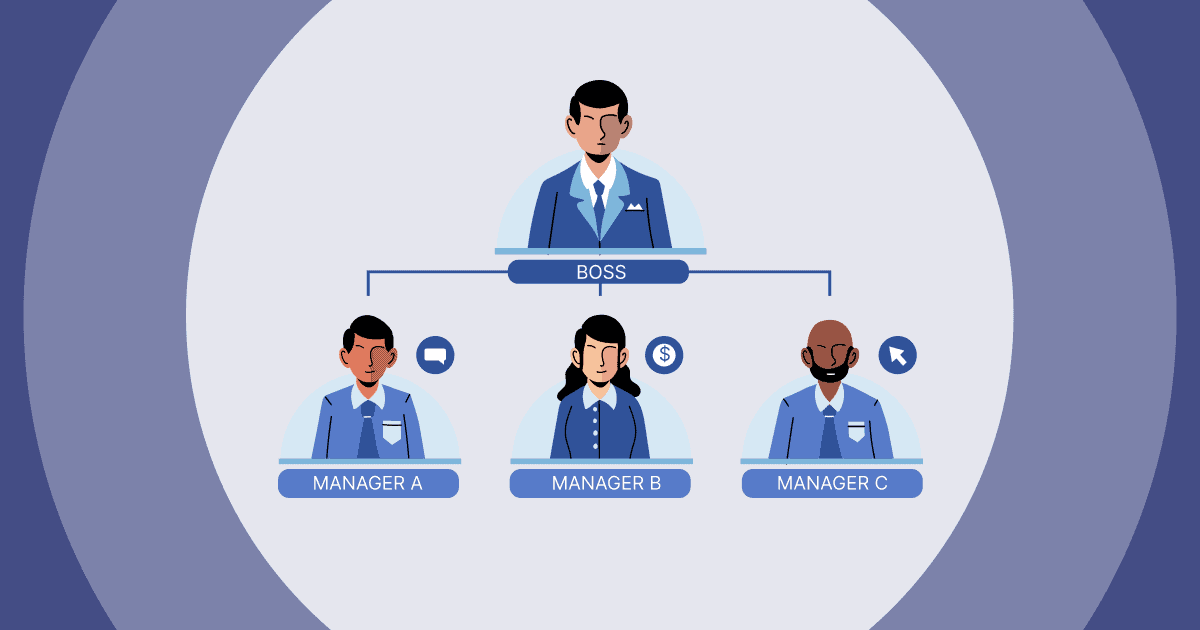Nowadays, prioritizing health and wellness at work has become a pressing matter for businesses rather than a mere choice. When a company takes care of its employees' well-being, it becomes a more attractive place for potential job candidates.
So, have you ever wondered if the benefits it brings are immensed and what wellness activities for employees can be introduced to ward off stress and exhaustion?
Read on to learn all the tips!
Helpful Tips from AhaSlides
- Signs You're Working in a Toxic Work Environment
- Complacency In The Workplace | Signs and 4 Best Steps To Prevent

Engage with your employees.
Instead of a boring orientation, let's start a fun quiz to refresh new day. Sign up for free and take what you want from the template library!
🚀 To the clouds ☁️
Let's get started!
- Why Promote Health and Wellness at Work?
- How To Promote Health and Wellness at Work
- #1. Raise Workplace Well-being Awareness
- #2. Create a Supportive Work Culture
- #3. Provide Workplace Wellness Programs
- #4. Offer Gym/Fitness Classes
- #5. Promote Work-Life Balance
- #6. Minimize Stressors in the Workplace
- #7. Find the Root of the Problem
- #8. Practice Self-care
- #9. Set Boundaries
- #10. Build Social Connections
- #11. Speak Up
- How To Talk About Your Health and Wellness At Workplace
- Key Takeaways
- Frequently Asked Questions

Why Promote Health and Wellness at Work?
Advocating health and wellness at work can have a positive impact on both employees and the company as a whole. Here are a few key points to consider when creating a culture of support and prioritizing mental health:
#1. Maintain Employee Well-being
When employees are mentally and emotionally healthy, they are better able to cope with stress, manage their emotions, and maintain a positive outlook, which can lead to improved job satisfaction, productivity, and overall (including physical health).
For example, people with good mental health tend to be calmer and make better decisions when facing problems or crises.
#2. Reduce Absenteeism and Presenteeism
Lower levels of well-being were linked to both presenteeism and absenteeism.
Employees with mental health problems may need to take time off work to care for themselves or attend therapy sessions. Sometimes, they may also need time off to manage a mental health crisis. This affects quite a bit how long they can be at work.
So when companies prioritize health and wellness, employees can seek help and get the respite they need to take care of themselves, which can improve attendance rates and reduce the burden on other employees.

In contrast, seeing employees in the office isn't always a good sign. Presenteeism is when employees come to work but are not productive due to mental health issues. Therefore, it can lead to reduced productivity and quality of work, which can affect the company's overall performance.
When companies put mental health first, they can reduce the stigma surrounding mental health issues which can encourage employees to speak about their problems. Furthermore, it may result in less presenteeism and a more engaged and productive workforce.
#3. Save Costs
Taking care of employee health and wellness can also reduce healthcare costs. Employees who receive support may be less likely to need expensive medical treatment, hospitalization, or urgent care. It can lead to lower healthcare costs for both employees and employers.
In addition, a company with good health care program can also improve employee retention. Because when employees feel supported and appreciated, they are more likely to stay with the company for the long term. This helps reduce recruitment costs while having a more stable and efficient workforce.
#4. Attract Talents
When companies prioritize mental health, it means that the well-being of all employees is equal, valued, and supported. It enhances employer branding as the company may be viewed as a positive and supportive workplace, which can help attract and retain top talent.
How To Promote Health and Wellness at Work
For Employers - Improving workplace wellness requires a multifaceted approach, but here are some key strategies for companies:
#1. Raise Workplace Well-being Awareness
The first thing employers need to do to start their journey to improving wellbeing at work is to be aware of it. A business needs recognition and understanding of issues involving health and wellness at work and their impact on employees in the work environment, including:
- Understand the signs and symptoms of a mental health condition.
- Understand potential risk factors and stressors in the workplace.
- Recognize the importance of addressing well-being concerns to promote employee health and productivity.
#2. Create a Supportive Work Culture
Companies should prioritize creating a supportive and inclusive work culture that promotes open communication, respect, and cooperation. This can help employees feel more connected and appreciated, which in turn makes them feel happy and less anxious.
#3. Provide Workplace Wellness Programs
Companies should offer health benefits, such as counselling services, employee support programs, or health screening. These benefits can help employees access the support they need and preventive healthcare accessible directly in the workplace.
#4. Offer Gym/Fitness Classes
Improving physical health is as important as taking care of your inner self. Companies can subsidize gym membership or invite trainers to come to the office once per week for on-site fitness classes.
#5. Promote Work-Life Balance
Companies should have flexible work hours, encourage employees to take breaks and promote healthy habits by organizing competitions/incentives for most steps walked, pounds lost, and such.
#6. Minimize Stressors in the Workplace
Companies should identify and address workplace stressors, such as excessive workload or poor communication, that can contribute to an imbalance of health and wellness at work. They can improve workflow, provide additional resources or training, or implement new policies or procedures.

For Employees - As an employee, there are also steps you can take to improve your overall wellness at work:
#7. Find the Root of the Problem
To build up your health resistance, especially against stress or anxiety, you must concentrate on determining the root cause of your problems.
For example, if the time it takes to get a job done always worries you, learn time management strategies to organize your work more efficiently or renegotiate deadlines with your manager.
Similar to other situations, it is always more effective to focus on the root of the problem to find a solution than focus on the problem itself.
#8. Practice Self-care
Practice self-care by taking short breaks, eating healthy, and exercising daily. They are considered potent medications that help fight stress, anxiety, and depression. You may include minor workouts into your everyday routine by jogging, taking the stairs over the elevator, or cleaning the house at the weekend.
In addition, getting quality sleep is the best way to improve mental wellness. It's often associated with a healthy mind and a healthy body.
#9. Set Boundaries
Set clear boundaries around your work and personal life to help manage stress and prevent burnout. This could involve setting limits on your work hours or disconnecting from work emails and messages outside of business hours or on weekends. Don't be afraid to do so since it's your right.
#10. Build Social Connections
Connecting and communicating with others within your community is also one of the practical ways to increase your mental resistance to stress.
Hence, make time for your important ones such as close friends or family. Spending quality time with them will make your comebacks at work 100 times stronger.
#11. Speak Up
If you are experiencing stress at work or other issues affecting your health and wellness at work, speak up and seek support. Your company can provide timely wellness resources or support to help you manage your workload and reduce stress.
In the next part, we'll learn more about speaking up for our well-being.

How To Talk About Your Health and Wellness At Workplace
Talking about what's troubling you in the workplace can be challenging but essential. Here are some tips to help you open up with the higher-ups:
- Choose the right time and place: When planning to talk about mental health at work, choose a time and place where you feel comfortable and can talk openly without distractions.
- Prepare what you want to say: Prepare what you want to say in advance to express your concerns and needs clearly. You might want to try with a dependable friend or write your thoughts beforehand.
- Be specific and clear: Be specific about your concerns and needs, and provide clear examples of how the problem affects your job or health. This can help your company understand your situation and provide appropriate support.
- Focus on solutions: Instead of just highlighting problems, focus on solutions that can help you manage your well-being and keep doing your tasks. This can show that you are proactive and committed to finding a solution.
- Know your rights: Understanding your rights under your company's policy and related mental health laws can help you advocate for appropriate accommodations or support.
Key Takeaways
When health and wellness at work are a priority, employees are more likely to feel valued and supported. This can increase their job satisfaction, productivity, and overall well-being. By creating a culture that promotes health awareness and support, businesses can also attract and retain top talents while improving overall performance and profitability.
Check Your Team's Well-being with a Pulse Check
Healthy employees lead to an engaging, inspiring, and motivating atmosphere in the workplace. Grab your free template below👇

Frequently Asked Questions
What would keep me healthy and well in work?
Take a 5-minute break every hour, eat healthy snacks, stay hydrated, stretch regularly and get well-rested sleep to feel healthy and engaged in your work.
What helps you stay mentally healthy at work?
Set boundaries, pay attention, trust self-instincts, and prioritise work-life balance. If issues arise, communicate with your leader to protect your health and wellness at work as soon as possible.
Why is wellness important in the workplace?
There are many benefits that workplace wellness brings. For employers, it helps them have a recruiting edge, and improve employee retention which saves costs from continually replacing staff. For employees, healthy, happy employees are more engaged, focused and productive at work.
What is wellness at work?
Wellness at work refers to efforts by employers to promote and support the physical, mental and financial health of their employees.








